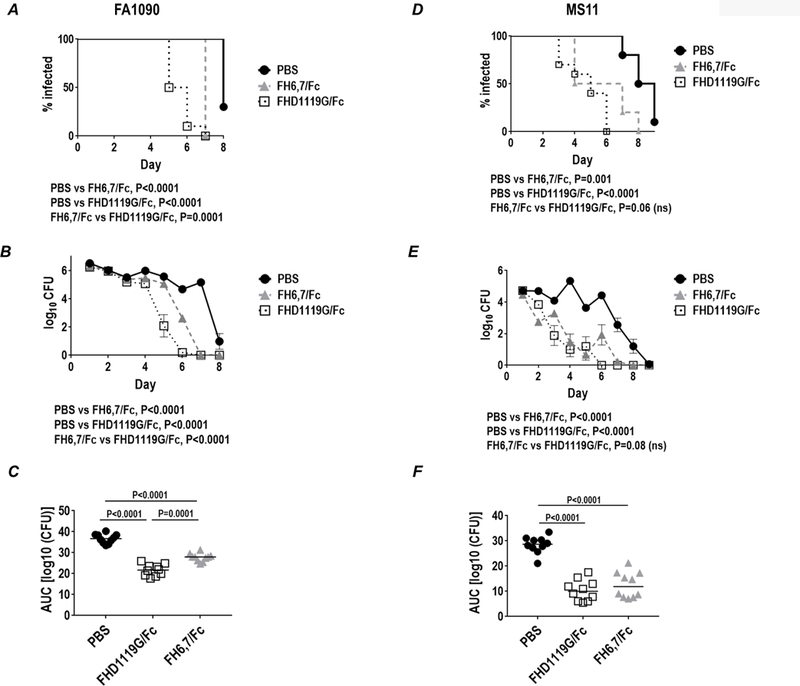Figure 6.

Efficacy of FH6,7/Fc and FHD1119G/Fc against strains MS11 and FA1090 in the mouse vaginal colonization model. Premarin®-treated wild-type BALB/c mice (n=10/group) were given 2.5 × 107 CFU strain FA1090 (panels A-C) or 3.4 × 105 CFU strain MS11 (panels D-F) intravaginally on Day 0 and treated intravaginally daily with 10 µg/d of either FH6,7/Fc (dashed grey lines and triangles) or FHD1119G/Fc (dotted black lines and non-filled squares), or 10 µl PBS (vehicle control; solid black line and circles), from Days 0 to 8 (for strain FA1090) or from Days 0 to 9 (for strain MS11). Vaginas were swabbed daily to enumerate CFU. A and D. Kaplan Meier curves showing time to clearance of infection. Groups were compared using the Mantel-Cox (log-rank) test. Significance was set at 0.017 (Bonferroni’s correction for comparisons across three groups). B and E. Log10 CFU versus time. X-axis, day; Y-axis, log10 CFU. C and F. Bacterial burdens consolidated over time (Area Under the Curve [log 10 CFU] analysis) for the two groups. The three groups were comparisons using the non-parametric Kruskal-Wallis equality of populations rank test. The χ2 with ties (two degrees of freedom) was 25.1 (P=0.0001) for C and 19.2 (P=0.0001) for F. Pairwise comparisons across groups was made with the Two-sample Wilcoxon rank-sum (Mann-Whitney) test.
